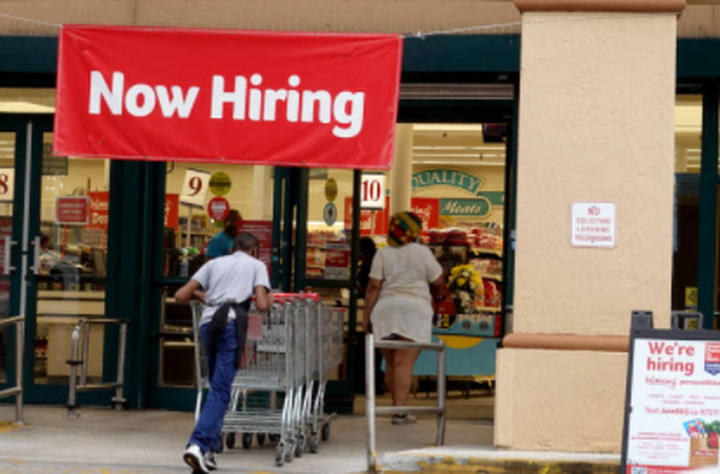
One of the more deceptive fantasies this year was that youngsters would have rather not work since they were squeezing by fine and dandy on government help. Individuals had an excess of cash, went above and beyond.
Individuals have left the labor force for bunch reasons in the beyond two years — cutbacks, wellbeing instability, kid care needs, and quite a few private matters that emerged from the interruption brought about by the pandemic. In any case, among the individuals who have left and can’t — or don’t have any desire to — return, by far most are more established Americans who sped up their retirement.
A few organizations have been raising wages to draw in and hold staff.
All things being equal, exiting the workforce — regardless of whether constrained by the pandemic or made conceivable in any case — is assuming a major part in America’s advancing work market.
In evaluating the positions recuperation, market analysts have called attention to that while the joblessness rate has descended, the workforce support rate hasn’t improved at a similar speed. Yet, Jared Bernstein, an individual from President Joe Biden’s Council of Economic Advisers, said that once “non-prime age” laborers — those more than 55 — are barred from the measurements a much more clear image of how the work recuperation is doing arises on the grounds that it strips out the retirement account.
Recently, ADP Chief Economist Nela Richardson said the solid securities exchange alongside taking off home costs “has given some higher pay individuals choices. We previously saw an enormous piece of the Boomer labor force resigning. What’s more they’re in a superior position now.”
More seasoned Americans, age 55 and up, represented walloping 90% of that expansion.
Last month, there were 3.6 million additional Americans who had left the workforce and said they didn’t need a task contrasted and November 2019, says Aaron Sojourner, a work business analyst and teacher at the University of Minnesota’s Carlson School of Management.
“I think a ton of the accounts envision prime-age laborers as being missing, yet it really slants a lot more established,” Sojourner told.
The work lack and retirement
Americans are stopping their positions in record numbers — multiple million every month since July — however a lot of that stopping is occurring among youngsters who are leaving for different positions or better compensation. They’re not leaving the labor force completely.
The frequently regretted work lack has turned into a shorthand for the muddled truth of the pandemic-time workforce.
“A piece of it is a task quality lack,” says Sojourner. “It’s somewhat of a riddle why businesses aren’t raising wages and further developing working conditions sufficiently quick to move individuals back in. They say they need to recruit individuals — there are 11 million employment opportunities — however they’re not making employment opportunities that individuals need.”
“There’s a segment pattern fundamental all of this… The topic of the amount we can get back is a decent one, and what we can do is attempt to make the conditions,” that permit individuals to return, he said.
Almost 70% of the 5 million individuals who left the workforce during the pandemic are more seasoned than 55, as per scientists from Goldman Sachs, and large numbers of them aren’t hoping to return.
“I can need a 65 inch TV for $50, yet it doesn’t mean there’s a TV deficiency, it implies I’m not able to pay enough to get someone to sell me a TV,” said Sojourner.
Retirements will quite often be “stickier” than other workforce leaves, the analysts composed. All things considered, they expect that an advancing infection circumstance and expanded immunization will permit more seasoned specialists to get back to the workforce.
Of course, more seasoned specialists are possibly rivaling more youthful, more qualified candidates for occupations, which could make their return really testing.
There are some early signs that seniors are returning to the labor force as inoculation
rates increment and businesses offer higher wages. The unretirement rate tumbled to simply more than 2% right off the bat in the pandemic, yet as of late has ticked up to around 2.6%, as per Nick Bunker, a market analyst at Indeed. That is still off from the pre-pandemic pace of around 3%.
In ordinary occasions, retirees are frequently moved once more into the labor force. In any case, the “unretirement” rate fell essentially during the pandemic, compounding the lack of laborers, as indicated by research from the Kansas City Fed.
Grace Rodriguez is a Financial Reporter for Funds Management make it. Prior to joining Funds Management , she worked as a fiction stories and a freelancer for magazine, where she eventually worked her way up to careers editor. During this time, she created daily content for own website and worked with the research team to create content. she developed some own News website.
Disclaimer: The views, suggestions, and opinions expressed here are the sole responsibility of the experts. No FUNDS MANAGEMENT journalist was involved in the writing and production of this article.